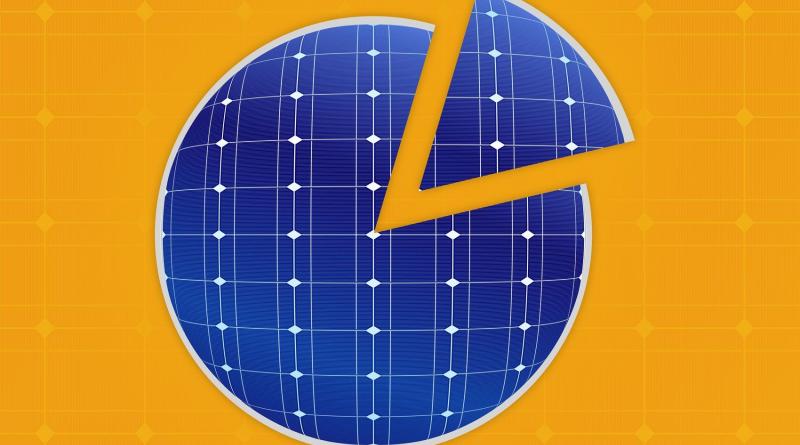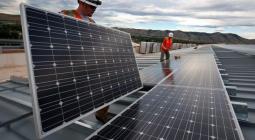So, What Exactly Is Community Solar?

Not everyone can have solar on their own roof. A new GTM series helps explain the weird and wonderful world of clean energy.
Residential solar has grown by leaps and bounds in the U.S. over the past two decades, but let's face it: Not everyone can have solar on their own roof.
As many as three-quarters of American households are unable to access rooftop solar — because they rent, or live in an apartment building, or a rooftop system is not affordable for them.
Enter community solar: a simple, even elegant concept. Neighbors who are unable to build their own solar systems can join together, build a larger and more cost-efficient solar array nearby, and use the energy it provides to power their homes. Like many simple concepts, however, the details can quickly become overwhelming.
In the first of a new series of explanatory articles, GTM will help you understand what community solar is and how it works.
Is there a basic definition of community solar?
There's no national standard for what a community solar program looks like, and there are plenty of disagreements about what makes a program most effective. But there are some basic ideas and principles that most people agree on.
In a nutshell: Customers sign up or buy a share in a solar project, often through a community solar project developer or provider. Once constructed, the panels generate power, and subscribers receive credits that typically reduce their utility bills.
How do I sign up? What are the requirements?
As long as there's an active program where you live, signing up is generally pretty easy. In some states, you can sign up through your utility. In others, like Illinois, community solar providers sign up customers online.
Providers sometimes require a credit score, but that’s becoming less and less common. Solstice, a company that works with community solar developers to enhance customer experience, uses an alternative to FICO credit scores to determine a subscriber’s likelihood to pay their electricity bill, which opens the door to more customers who may not have top-tier credit scores. In 2018, the organization introduced a “no-risk” contract lasting just one year.
That kind of flexibility was once rare in the solar industry, which favors stable, long-term contracts that convince financiers of continued return on investment. But as community solar programs have become more commonplace — 19 states and Washington, D.C. now host some sort of program — many of those friendlier contract terms have become more accepted by the companies signing up customers.
The Coalition for Community Solar Access (CCSA), an industry trade group, generally shuns cancellation fees, as do many community solar companies such as Solstice, BlueWave Solar and Nexamp.
Do I save money by signing up for community solar?
You should, yes. Most community solar providers, as well as CCSA, hold guaranteed savings over the utility bill as a standard for subscriptions. Savings can vary, though, from just a few percentage points up to 15 percent off of your average utility bill. Not all programs require customer savings.
How bills show the amount of money saved also varies. Generally, a community solar subscription offers customers “credits” off their utility bills. Those can show up either directly on the utility bill, a practice known as "consolidated billing," or on a separate document sent by the community solar provider.
Opinions on the preferred method vary even among community solar advocates. Proponents of consolidated billing, including Washington, D.C.-based "digital utility" Arcadia, say it’s easier for customers to view and understand what's going on when all of their electricity billing information is in one place.
Other companies, including Nexamp and CleanChoice Energy, favor two bills — one from the utility and another from the community solar subscription company — so a customer’s utility experience doesn’t change after they sign up for a program.
How big is the community solar market today? Are a lot of people doing this?
The market is comparatively small but growing quickly — and with a very long runway ahead.
At the end of 2019, there were around 2 gigawatts of community solar projects in operation in the United States, just a sliver of the country's overall 76-gigawatt fleet of solar plants. The community solar market is currently concentrated in just a few states, led by Minnesota, Massachusetts and New York. But 2019 marked the third consecutive year of 500 megawatts of installations or more, according to the Solar Energy Industries Association, and new state markets such as Illinois and New Jersey are opening up.
As for the total number of households subscribed to community solar programs today, that's hard to quantify. Some programs count both individual households and businesses as subscribers. But in Minnesota, which accounts for more than one-third of the total U.S. market, utility Xcel Energy reports about 16,700 unique residential subscribers for the state's community solar program.
Does community solar exist in every state?
No. Forty states are home to at least one project, but not all of those states have active programs.
The programs that do exist can look quite different from one state to the next, varying significantly in size, scope and goals. The absence of a national standard for community solar has allowed state policymakers to tailor programs to their communities. The downside is that some programs are much more successful than others.
This patchwork has resulted in a pile-on in states where programs are enticing for companies and a lack of development where they’re not, regardless of access to sunshine.
California is one striking example. The state outranks all others in terms of population, and the Golden State is home to the country's most sophisticated and mature solar market. But when it comes to community solar, California’s total installed is less than a fifth of that already constructed in Minnesota, a state best known for its freezing winters and general good-naturedness. (Full disclosure: The author is a native Minnesotan.)
California has a couple of state programs set up, but advocates say they’re overdesigned to the point of encumbering any real progress. By comparison, Massachusetts and Illinois opened programs that sparked a bonanza of development.
Demand was so significant in Massachusetts that utility National Grid said the added generation could jam up its transmission and distribution system. The utility began an extensive study to determine whether upgrades were needed. Developers criticized that study, saying it wasted valuable time in getting projects built and operational.
The tension in Massachusetts underscores persistent disagreements between community solar companies and investor-owned utilities on who should control community solar programs and what’s the best way to deliver value to customers.
By joining community solar, am I ditching my utility?
Not exactly. Even if you subscribe, your utility will still deliver electricity to your home via the electric grid. And you may still just get one monthly electric bill from your utility, with the savings included. But subscribing supports the deployment of solar, with utilities paying for the power generated.
In some cases, utilities are spearheading community solar programs or projects on their own. Florida Power & Light, a subsidiary of big-time solar developer NextEra Energy, recently won approval for what it claims is the largest community solar program in the country.
Other utilities such as Xcel in Colorado offer options for customers to buy from individual utility-owned projects. The Sacramento Municipal Utility District’s SolarShares program was at the center of some community-solar drama in California last year. The Coalition for Community Solar Access advocates for a market that fosters ample third-party competition, rather than allowing investor-owned utilities to control the process.
Compared to other utility programs, Florida’s is on a different scale. Many community solar advocates have derided the state’s program as not qualifying as “real” community solar, in part because FP&L will build all of the projects in-house. After some back-and-forth, the utility offered some concessions and community solar advocates came back around to supporting the program.
30 April 2020
gtm




